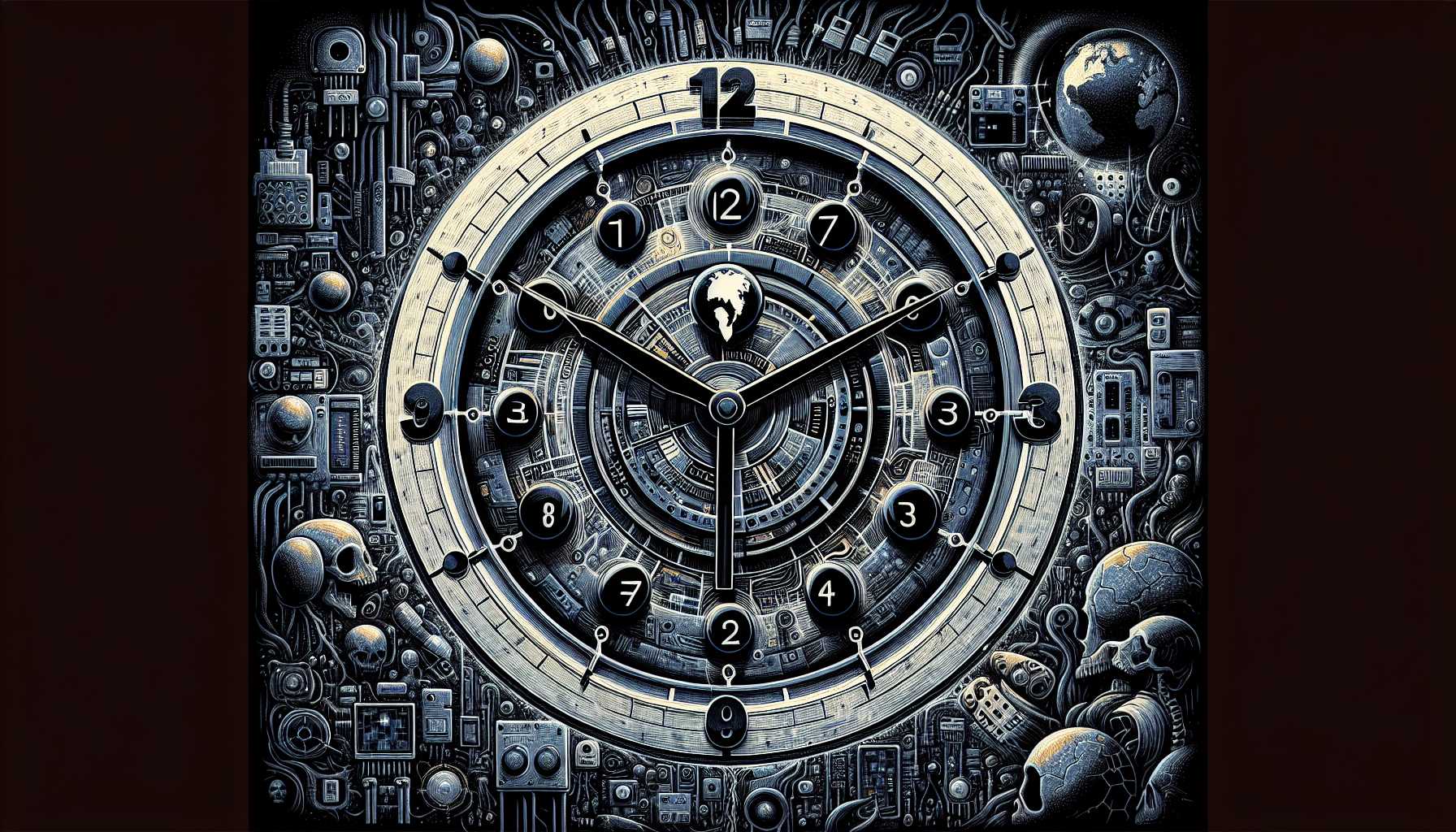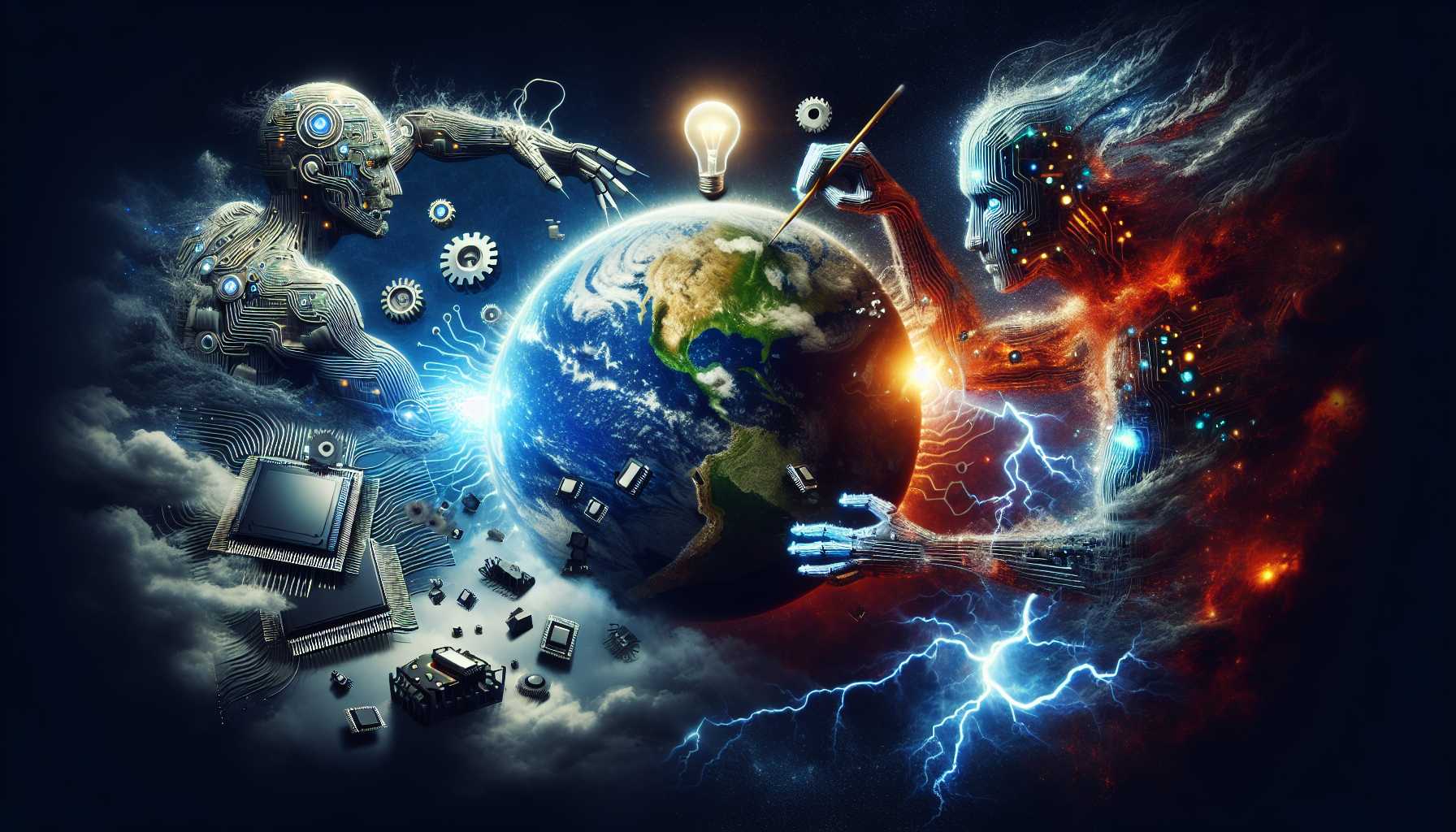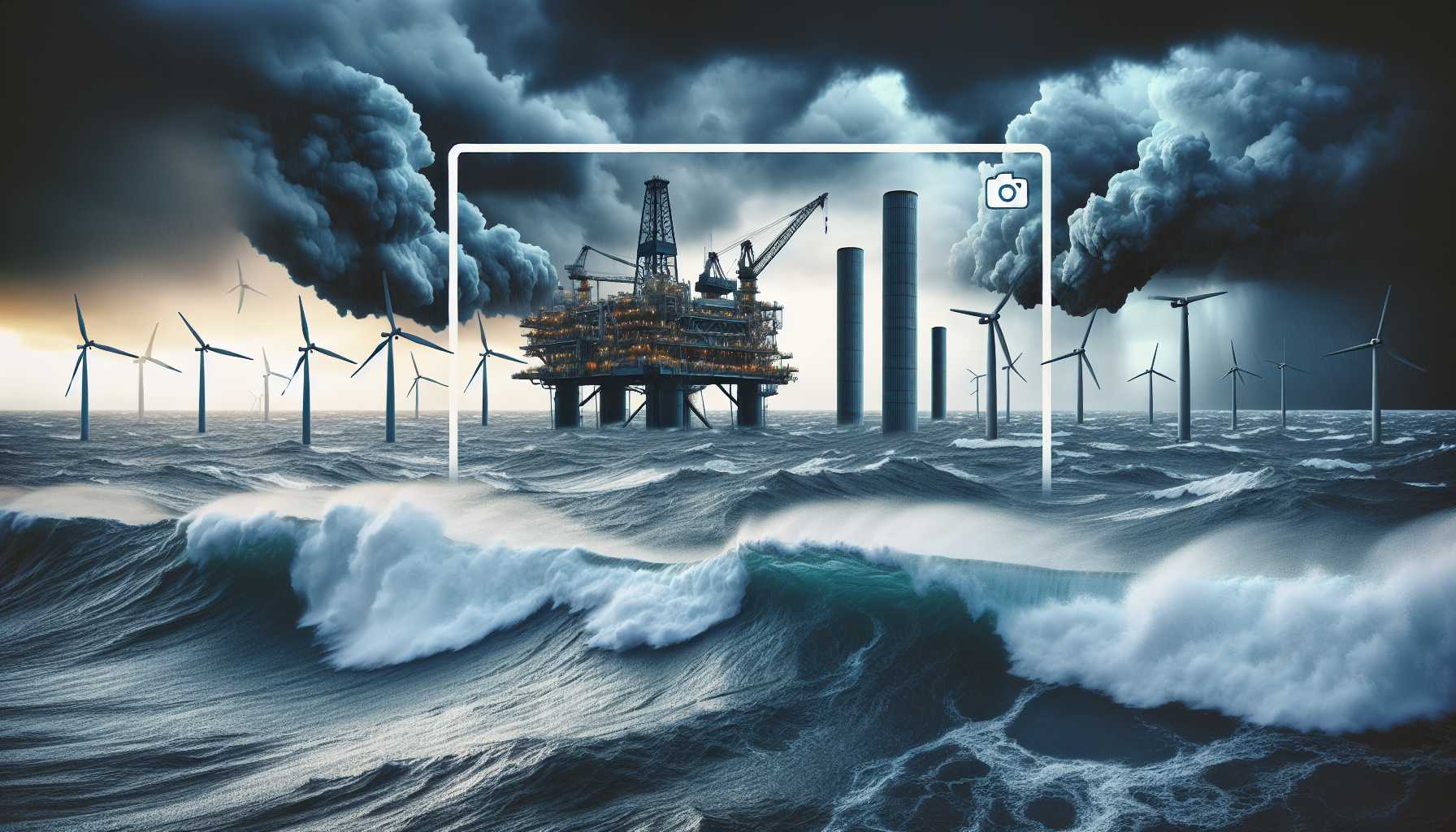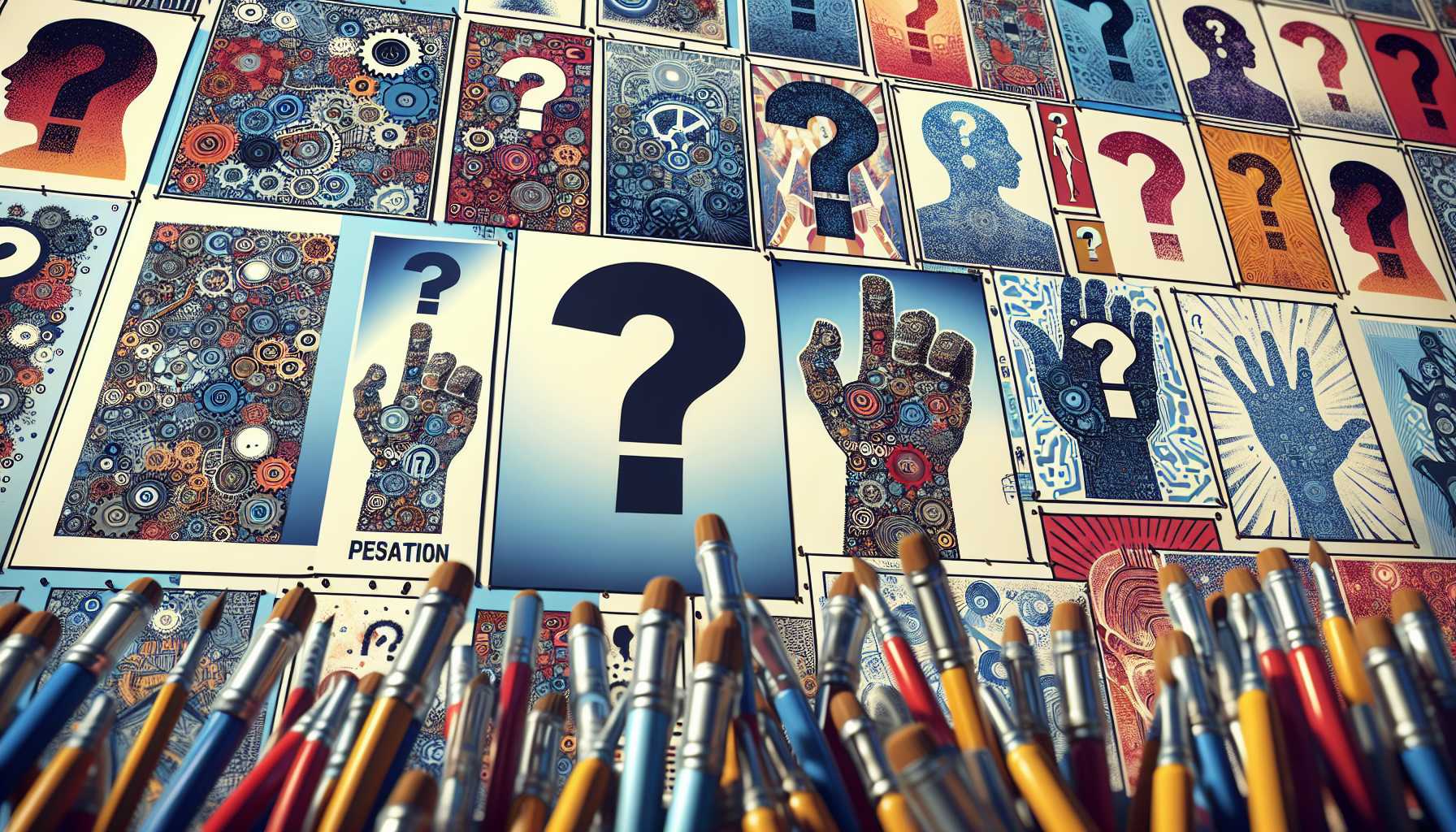As a product manager and tech industry leader, I am tasked with navigating the constantly evolving landscape of innovations and challenges that shape our world. However, what truly fascinates me—and terrifies some—is the delicate balance we hold between monumental breakthroughs and cataclysmic risks. Let’s tap into the narrative beneath the Doomsday Clock’s latest assessment and the viral surge of North Sea workers on TikTok, all the while touching on the mystery of AI-generated content in popular media. Hold on tight; we’re diving into the deep end of tech’s most pressing issues.
The Doomsday Clock Remains Grimly Static
 Imagine a clock, not just any clock, but a symbol of apocalyptic dread hanging ominously over humanity’s head. We’re situated at a metaphorical 90 seconds to midnight, according to the Bulletin of the Atomic Scientists. Why should you, the tech enthusiast, care about this illustrative Doomsday Clock? It’s not just about potential global catastrophe; it’s a barometer that includes the profound implications of our technological advancements. Technological acceleration, especially in artificial intelligence and biotechnology, has outpaced our governance abilities. This isn’t just a statement—it’s a siren call to anyone in tech to ponder ethical governance and the dichotomy of innovation and responsibility.
Imagine a clock, not just any clock, but a symbol of apocalyptic dread hanging ominously over humanity’s head. We’re situated at a metaphorical 90 seconds to midnight, according to the Bulletin of the Atomic Scientists. Why should you, the tech enthusiast, care about this illustrative Doomsday Clock? It’s not just about potential global catastrophe; it’s a barometer that includes the profound implications of our technological advancements. Technological acceleration, especially in artificial intelligence and biotechnology, has outpaced our governance abilities. This isn’t just a statement—it’s a siren call to anyone in tech to ponder ethical governance and the dichotomy of innovation and responsibility.
Beneath the Surface: AI’s Rising Tide in Conflict and Climate
 As we contemplate the ticking clock, it’s evident that the intersection of artificial intelligence with global challenges is a key consideration. The hottest year on record and the subsequent climate catastrophes underscore the urgent need for innovative solutions. Yet, the same technologies developed to predict or mitigate these disasters hold an intrinsic duality—the potential for unprecedented harm. AI’s development questions our readiness to control a tool that could either heal or shatter civilization. Can we, the tech community, forge a path that steers the capabilities of AI towards a sustainable future? We must, for the clock tirelessly ticks as nature’s wrath intensifies, compounded by geopolitical conflicts that threaten to escalate beyond control.
As we contemplate the ticking clock, it’s evident that the intersection of artificial intelligence with global challenges is a key consideration. The hottest year on record and the subsequent climate catastrophes underscore the urgent need for innovative solutions. Yet, the same technologies developed to predict or mitigate these disasters hold an intrinsic duality—the potential for unprecedented harm. AI’s development questions our readiness to control a tool that could either heal or shatter civilization. Can we, the tech community, forge a path that steers the capabilities of AI towards a sustainable future? We must, for the clock tirelessly ticks as nature’s wrath intensifies, compounded by geopolitical conflicts that threaten to escalate beyond control.
Viral Voyages: Offshore Workers Navigate Rough Seas & Social Trends
 From the ethereal worries of the Doomsday Clock, let’s anchor ourselves to the tangible realm of the North Sea where a different kind of viral trend is afoot. The gritty lives of offshore workers have seized the TikTok stage, and what’s captivating is not just the frightening power of the ocean but the industry’s human face amidst unforgiving environments. This phenomenon isn’t just another social media craze; it’s a microcosm of society’s fascination with extremities and the rugged poetry of hard labor. Through their daily routines and camaraderie, these workers articulate a narrative that questions our energy consumption and the ecological footprints of the fossil fuel industry. In the tech space, this viral surge presents an opportunity to dissect how industries intersect with social media. As technology creators, we must also ask: how can we ensure that digital platforms don’t oversimplify complex socio-economic issues?
From the ethereal worries of the Doomsday Clock, let’s anchor ourselves to the tangible realm of the North Sea where a different kind of viral trend is afoot. The gritty lives of offshore workers have seized the TikTok stage, and what’s captivating is not just the frightening power of the ocean but the industry’s human face amidst unforgiving environments. This phenomenon isn’t just another social media craze; it’s a microcosm of society’s fascination with extremities and the rugged poetry of hard labor. Through their daily routines and camaraderie, these workers articulate a narrative that questions our energy consumption and the ecological footprints of the fossil fuel industry. In the tech space, this viral surge presents an opportunity to dissect how industries intersect with social media. As technology creators, we must also ask: how can we ensure that digital platforms don’t oversimplify complex socio-economic issues?
The Mystery of AI and Creativity: ‘True Detective’ Triggers Conversation
 Speaking of simplification, let’s brush up against the peculiar case of AI’s role in popular media. HBO’s “True Detective: Night Country” stirred the pot with enigmatic posters that some viewers speculated were AI-generated. How do we draw the line between machine-made art and human creativity? This isn’t just a question for the curators of the Louvre—it’s a debate that pricks at the heart of the tech industry. If AI can emulate an artist’s work, what does that mean for the future of creative jobs? As technology rapidly evolves, we must all contribute to the dialogue about AI’s place in art and guard against its potential to diminish human creativity or, on the flip side, to see it as a collaborator rather than a competitor in the creative process.
Speaking of simplification, let’s brush up against the peculiar case of AI’s role in popular media. HBO’s “True Detective: Night Country” stirred the pot with enigmatic posters that some viewers speculated were AI-generated. How do we draw the line between machine-made art and human creativity? This isn’t just a question for the curators of the Louvre—it’s a debate that pricks at the heart of the tech industry. If AI can emulate an artist’s work, what does that mean for the future of creative jobs? As technology rapidly evolves, we must all contribute to the dialogue about AI’s place in art and guard against its potential to diminish human creativity or, on the flip side, to see it as a collaborator rather than a competitor in the creative process.
Conclusion: The Seas of Change
As we stand gathered around the high-tech cauldron of our times, we must stir with caution and deliberate intent. The juxtaposition of global warning signs with technology’s rapid development serves as a reminder that, although we can’t turn back the Doomsday Clock, we can influence the direction it moves through informed, ethical innovation. Let’s take the fear that bolsters the clock’s significance and transform it into fuel for thoughtful discourse and development. Let’s guide the AI wave with a steady hand, ensuring that it shores up against challenges rather than breaking over us in uncontrolled disruption. And let’s remember the human element, represented so vividly by the North Sea workers and the questions raised by the “True Detective” poster mystery. In doing so, we can help ensure that the same tech that brings us to the cusp of peril can also be the beacon that guides us to a more cautiously optimistic future.




